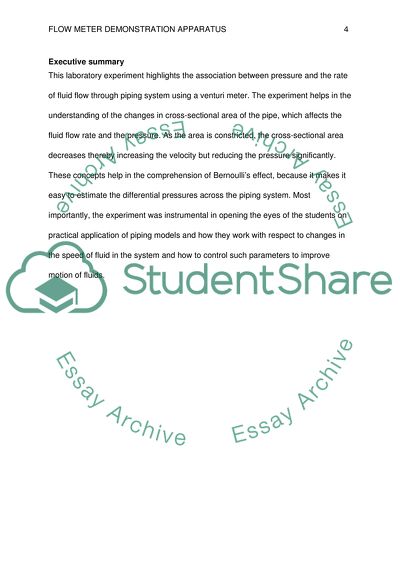Cite this document
(Flow Meter Demonstration Apparatus Lab Report Example | Topics and Well Written Essays - 2625 words, n.d.)
Flow Meter Demonstration Apparatus Lab Report Example | Topics and Well Written Essays - 2625 words. Retrieved from https://studentshare.org/engineering-and-construction/1878110-fluid-mechanics-lab-report-flow-meter-demonstration-apparatus
Flow Meter Demonstration Apparatus Lab Report Example | Topics and Well Written Essays - 2625 words. Retrieved from https://studentshare.org/engineering-and-construction/1878110-fluid-mechanics-lab-report-flow-meter-demonstration-apparatus
(Flow Meter Demonstration Apparatus Lab Report Example | Topics and Well Written Essays - 2625 Words)
Flow Meter Demonstration Apparatus Lab Report Example | Topics and Well Written Essays - 2625 Words. https://studentshare.org/engineering-and-construction/1878110-fluid-mechanics-lab-report-flow-meter-demonstration-apparatus.
Flow Meter Demonstration Apparatus Lab Report Example | Topics and Well Written Essays - 2625 Words. https://studentshare.org/engineering-and-construction/1878110-fluid-mechanics-lab-report-flow-meter-demonstration-apparatus.
“Flow Meter Demonstration Apparatus Lab Report Example | Topics and Well Written Essays - 2625 Words”, n.d. https://studentshare.org/engineering-and-construction/1878110-fluid-mechanics-lab-report-flow-meter-demonstration-apparatus.


